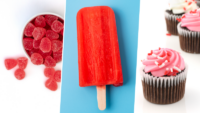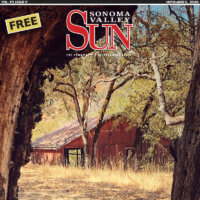I remember my first Cuban coffee. It was a sweltering summer afternoon, the tropical Miami air clinging to my skin, the humidity heavy, moisture frizzing my hair ridiculously. There were four men playing dominoes at a beat-up café table on the sidewalk, somehow managing to look cool and elegant in their starched white linen guayaberas, cigar smoke wafting atmospherically from under their straw fedoras.
The hand written menu was in Spanish, nothing more than Cuban café, cortadito, and cafe con leche. A few buttery looking pastries graced the counter, some sweet and filled with guava or fresh sweetened cheese, and a savory version with ground beef and raisins. I ordered what would become a major addition of mine the five years I lived on South Beach…a cortadito. An extremely strong, rich portion of espresso with equal amounts of steamed milk — no froth! — with, an absolute must in the Cuban culture, a dangerous amount of sugar.
There were many things about the Cuban culture that I quickly fell in love with. Rum-soaked nights salsa dancing, sticky, tooth-achingly sweet plantains, not to mention the people themselves. So, when my great friend, fellow foodie, and Sonoma resident Katharine K., told me she was off on an adventure to the Caribbean island I was incredibly jealous. I sat her down over coffee, sadly not the Cuban variety, and insisted she fill me in on every fascinating detail of her journey and thought, how fun, to share with you her story.
Kristin: I know it is still fairly difficult for American citizens to travel to Cuba. Who organized the trip and how did you find out about it?
Katharine: The Sonoma Valley Museum of Art sent out a note advertising the trip. Our visas came through Californians Building Bridges, a nonprofit started by (Sonoma developer) Darius Anderson to bring people to Cuba on a people-to-people humanitarian license. The organization is interested in giving more people the opportunity to visit Cuba and to see for themselves the difficulty that the US embargo inflicts on the Cuban people.
Kristin: Why were you interested in visiting Cuba?
Katharine: I was interested because the trip was going to focus on the art of Cuba and would give the group access to some of the best artists in the country.
Kristin: Tell me about the rest of your group.
Katharine: Most of the people in the group, 17 of us, were from Sonoma. There was one from L.A. and two from N.Y.
Kristin: Did the food have any part in your desire to visit Cuba?
Katharine: Several years ago the fellow who cut my hair in Oakland went to Cuba with his partner. He reported that the food they ate was not very interesting, mostly black beans and rice for every meal along with a little stringy chicken. Undaunted, I bought three Cuban cookbooks and tried cooking from them. It is true that black beans and rice is a staple of the Cuban diet, but, as the cookbooks revealed, there was a lot more variety: wonderful salads, pulled pork, a great beef dish called picadillo, and plenty of sweets like flan. I didn’t expect the food to be the highlight of the trip and it wasn’t, but it was very good and there was enough variety to keep the meals interesting.
Kristin: What were a few of the meals you enjoyed the most?
Katharine: My favorite places to eat were the “paladars,” small privately owned restaurants. When they first originated they could only seat 12 people in the family home and could only be staffed by members of the family. The restrictions are less limited now, they can seat as many as 50 and can hire people from outside the family, but they are still quite intimate and the food is often quite good. For example, the first night we ate at Paladar Los Mercaderes in the old part of Havana. It was a feast. We began with three different spreads for the house-made bread: butter with herbs, blue cheese with fruits, and olive oil with herbs. Then very thinly sliced dried beef, octopus with pesto and fried onions, lobster in a lobster shell, a lamb stew, a chicken stew, rice, and chocolate cake for dessert. We were blown away.
Kristin: Wow, that sounds like such fun! Were there any foods that you considered to be strange or exotic?
Katharine: Spiny lobsters are caught in the waters surrounding Cuba. They are delicious. My favorite dish cooked with them was a spicy tomato sauce with large chunks of the lobster.
Kristin: Did you happen to visit any Cuban food markets?
Katharine: I did go to a grocery store, populated by locals, which was right across from the hotel. I must say there wasn’t anything very interesting in the place and not even much on the shelves! It was a Saturday late afternoon so maybe it was depleted by the weekend shoppers?
Kristin: When I lived in Miami, I loved the Mojitos! What did y’all drink? Great cocktails? Coffee? Was there wine?
Katharine: I loved the rum! Mojitos are the most frequently offered drink there. The first afternoon when we walked into the hotel to check in, they even offered us each a mojito. One evening we went to the famous Tropicana for the fabulous show with dancers wearing gigantic headdresses, wonderful music, and singing… a real Cuban Las Vegas kind of show. Our tables were set with five bottle of Havana Club rum, ice, bottles of cola for making Cuba Libres and various munchies. I drank rum over ice there and it was great. But, I really did love the mojitos. A small group of us went to the bar where Ernest Hemingway went to drink mojitos. There was wonderful coffee, too. We visited a coffee producing area and stopped for a break at a coffee house. I had a vanilla-flavored espresso and it was incredibly smooth and delicious. Every morning I had a latte. There was wine, but I wasn’t that interested in it!
Kristin: It sure sounds like a wonderful experience. What would you say was the highlight of the trip?
Katharine: The visits with the artists in their studios. The last night we had a party in the garden of two artists who are brothers. Their work was hung in the gallery on the ground floor and the garden was decorated with lights and a fellow was making mojitos. We enjoyed a beautiful buffet of roasted pork, black beans and rice, croquettes, carrots, beets, squash, Cuban sweet potatoes and rice pudding for dessert. The night ended with a performance of Carlos Varela, the Bob Dylan of Cuba, and his band. It was transporting, not understanding a word, but feeling it all.
Kristin: Would you return to Cuba? If so what would you like to do this time or do again?
Katharine: Yes I would love to go back to Cuba. This time, I’d like to get outside Havana more, into the countryside. I would like to stay in a hotel in Old Havana which would make it easier to participate in the street scene of the old part of the city. I would like to see more artists, possibly some women and some up and coming artists that are not so well known and famous as the ones we met. I would definitely like to have more time to hang out in the streets and talk with people.
Kristin: What advice would you give to someone interested in traveling to Cuba?
Katharine: Go! Don’t wait. It is fascinating.
Kristin Jorgensen is one of Sonoma’s most passionate, food obsessed residents. In this weekly column, she covers all the delicious happenings, foodie events and restaurants in Sonoma, the rest of Wine Country and beyond. Email her with comments, questions, or your food related events at foodandwine@sonomasun.com.


